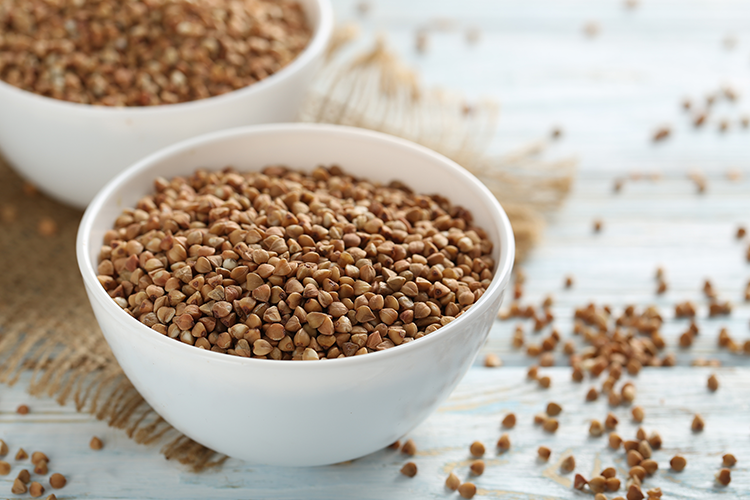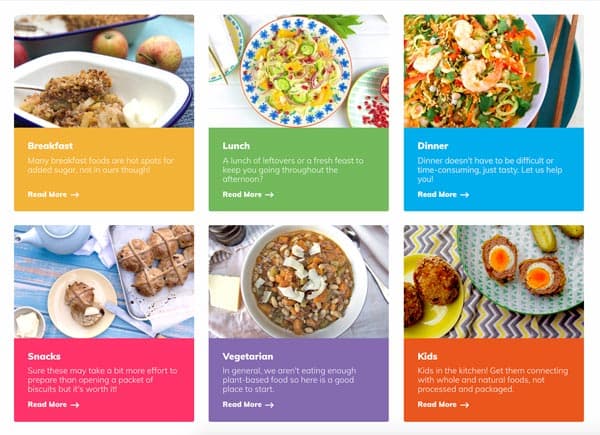Blog
Functional Food Super Hero #6 – Buckwheat
 Now, my friends, do not be fooled by its wheat-bearing name. This little guy is actually a seed, and an amazing substitute for many a grain, packed with goodies ready to get you health hip and happening.
Now, my friends, do not be fooled by its wheat-bearing name. This little guy is actually a seed, and an amazing substitute for many a grain, packed with goodies ready to get you health hip and happening.
Buckwheat has been used for centuries, sustaining folk in China and the Himalayas long before wheat and rice where even in favour.
And it is CHEAP! A 500g bag of organic buckwheat is $3.70 (as at March 2016). And a little goes a long way – these puppies are filling.
What buckwheat can offer you
So, this is great. A wee seed as versatile as they come! Buckwheat can be used as an alternative to:
- Oats in porridge
- Cous cous in tabbouleh
- Rice in risotto
- Wheat as flour for baking breads and muffins
- Refined breakfast cereal as a whole food cereal or muesli base
Being completely gluten-free buckwheat is a great alternative for those with Coeliac disease, irritable bowel syndrome, gluten sensitivity or following a low FODMAP protocol (and numbers of people aligned to any one of these areas are growing, rapidly).
Cholesterol, hypertension and fibre
Buckwheat intake has been shown to ameliorate factors implicated in heart disease. Brilliant! (1,2)
This is largely in part due to relieving constipation as a great dietary fibre, and it’s work as a powerful anti-oxidant. But the quality that deserves a shining star scratch ‘n’ sniff sticker is buckwheat’s hefty rutin content. Rutin is a powerful phytoconstituent that fights allergies, and is wonderfully anti-inflammatory.
Blood glucose control
Constituents within buckwheat may assist in modulating blood sugar. These include fibre, its low glycaemic index, but also a soluble carbohydrate known as D-chiro-inositol. Studies in this area are in animal models, but positive effects are being found.
Protein
Buckwheat is a source of good quality protein – and whilst quinoa and some legumes may have a little more protein content, buckwheat contains essential amino acids lysine and arginine. These two are not commonly found in grains, and needed for combating cold sores, and assisting bone, collagen and muscle synthesis; and heart and immune system supportive respectively.
Whilst a good source of protein, buckwheat has more carbohydrate in it’s macronutrient ratio, falling neatly between quinoa and brown rice on the carb scale. However it is considered low GI and relatively low GL. So treat it as you would brown rice, if you are monitoring macronutrient intake.
Gimme the good stuff
Admittedly, the buckwheat flavor is unique, described as nutty and a little earthy. Once you have it a couple of times, your taste buds adapt and you will be it chowing down regularly.
A point to remember when buying – do not cook the roasted or activated seeds. These will simply turn to mush. Cook only from the raw kernel, and give a good rinse before and after to rid a minor (completely harmless) film that forms.
Here are some tips to get some buckwheat into your world:
- Leek and goats cheese galette
- Raw or lightly toasted, combine with seeds, nuts, coconut and a little dried fruit for home made muesli
- Soak with coconut milk, chia seeds, vanilla, cinnamon for bircher style breakfast, adding some apple or berries on top
- Soba noodle salad (make sure you get 100% buckwheat though, as many contain wheat)
- Flour substitute in baking
- Pancakes!
References
- Li, SQ, & Zhang, QH 2001, ‘Advances in the development of functional foods from buckwheat’, Critical Reviews In Food Science And Nutrition, vol. 41, no. 6, pp. 451-464
- Wieslander, G, Fabjan, N, Vogrincic, M, Kreft, I, Janson, C, Spetz-Nyström, U, Vombergar, B, Tagesson, C, Leanderson, P, & Norbäck, D 2011, ‘Eating buckwheat cookies is associated with the reduction in serum levels of myeloperoxidase and cholesterol: a double blind crossover study in day-care centre staffs’, The Tohoku Journal Of Experimental Medicine, vol. 225, no. 2, pp. 123-130











